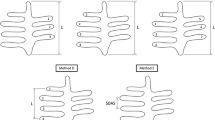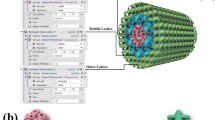Abstract
The objective of this work is to test the hypothesis that the failure probability prediction model by Fischer-Cripps and Collins can be used without introducing an empirically derived parameter and therefore can serve as a predictive tool. We examined this hypothesis by Hertz cone crack initiation tests of flat borosilicate glass statically loaded through a spherical indenter. The Weibull parameters characterizing the surface flaw distribution were determined from biaxial flexure experiments using specimens with the same surface condition as in the indentation tests. Elastic moduli of the specimens were determined by using ultrasonic methods. In addition, the crack initiation was determined using stereo microscopy at 20× magnification.
The results demonstrated that the model can predict the minimum critical load and cumulative failure probability for small indenters within the 90% confidence level. Therefore, the current work demonstrates that the model can be used as a predictive tool provided the parameters necessary for the model accurately reflect those of the actual sample populations that are used for the experimental setup.
Similar content being viewed by others
References
H. Hertz, J. Reine Angew. Math. 92 (1881) 156; “Translated and Reprinted in English in 'Hertz's Miscellaneous Papers'” (Macmillan & Co., New York, 1896) Ch. 5.
H. Hertz, Verhandlungen des Vereins zur Beforderung des Gewerbe Fleisses 61 (1882) 449; “Translated and Reprinted in English in 'Hertz's Miscellaneous Papers'” (Macmillan & Co., New York, 1896) Chap. 6.
F. Auerbach, Annalen der Physik und Chemie Poggendorff (Leipzig) 43 (1891) 61.
J. P. A. Tillett, Proc. Phys. Soc. B 69 (1956) 47.
A. S. Argon, Y. Hori and E. Orowan, J. Amer. Ceram. Soc. 43(2) (1960) 86.
B. Hamilton and H. Rawson, J. Mech. Phys., Solids 18 (1970) 127.
M. T. Huber, Ann. d. Phys. 43 (1904) 61.
K. L. Johnson, “Contact Mechanics” (Cambridge University Press, Cambridge, 1985).
F. C. Frank and B. R. Lawn, Proc. Roy. Soc. A 299 (1967) 291.
R. Mouginot and D. Maugis, J. Mater. Sci. 20 (1985) 4354.
A. C. Fischer-Cripps and R. E. Collins, ibid. 29 (1994) 2216.
A. C. Fischer-Cripps, J. Mater. Sci. 32 (1997) 1277.
S. B. Batdorf and J. G. Crose, J. Appl. Mech. 41 (1974) 459.
S. B. Batdorf and M. L. Heinisch Jr, J. Amer. Ceram. Soc. 61(7/8) 355.
W. G. Brown, “A Load Duration Theory for Glass Design” (National Research Council of Canada, Division of Building Research, Ottawa, Canada, 1972).
A. G. Evans, J. Amer. Ceram. Soc. 61(7/8) (1978) 302.
L. Y. Chao and D. K. Shetty, ibid. 73(7) (1990) 1917.
L. Y. Chao and D. K. Shetty, ibid. 74(2) (1991) 333.
S. M. Wiederhorn etc., ibid. 57 (1974) 336.
S. M. Wiederhorn, etc., in “Fracture Mechanics of Ceramics,” Vol. 2, edited by R. C. Bradt, etc. (Plenum, 1974) p. 829.
K. L. Johnson, J. J. O'Connor and A. C. Woodward, Proc. R. Soc. Lond. A 334 (1973) 95.
B. Dodson, “Weibull Analysis” (ASQ Quality Press, Milwaukee, Wisconsin, 1994) p. 66.
Author information
Authors and Affiliations
Corresponding author
Rights and permissions
About this article
Cite this article
Wang, R., Katsube, N., Seghi, R.R. et al. Failure probability of borosilicate glass under Hertz indentation load. Journal of Materials Science 38, 1589–1596 (2003). https://doi.org/10.1023/A:1023290618573
Issue Date:
DOI: https://doi.org/10.1023/A:1023290618573




